
Causes and Cures for Rounded Shoulders
You know that subtle slump in the shoulders you often see in subway passengers or your colleagues? It’s not just fatigue—it’s a sign of our digital age.
The poor posture effects of prolonged screen time and sedentary lifestyles are no longer limited to seniors; even the youth in Vancouver are displaying hunched shoulders at an alarming rate.
In fact, recent research has revealed a prevalent issue among professionals: many are displaying forward head posture, a condition significantly linked to prolonged desk jobs and suboptimal workspace ergonomics.
But with the right advice, you can counteract these effects. Enter Troy from Tsquared Vancouver Personal Training—a beacon of hope in this slouched-over saga.
Continue reading as we demystify the causes, implications, and cures for rounded shoulders. And yes, there’s a solution closer than you think.
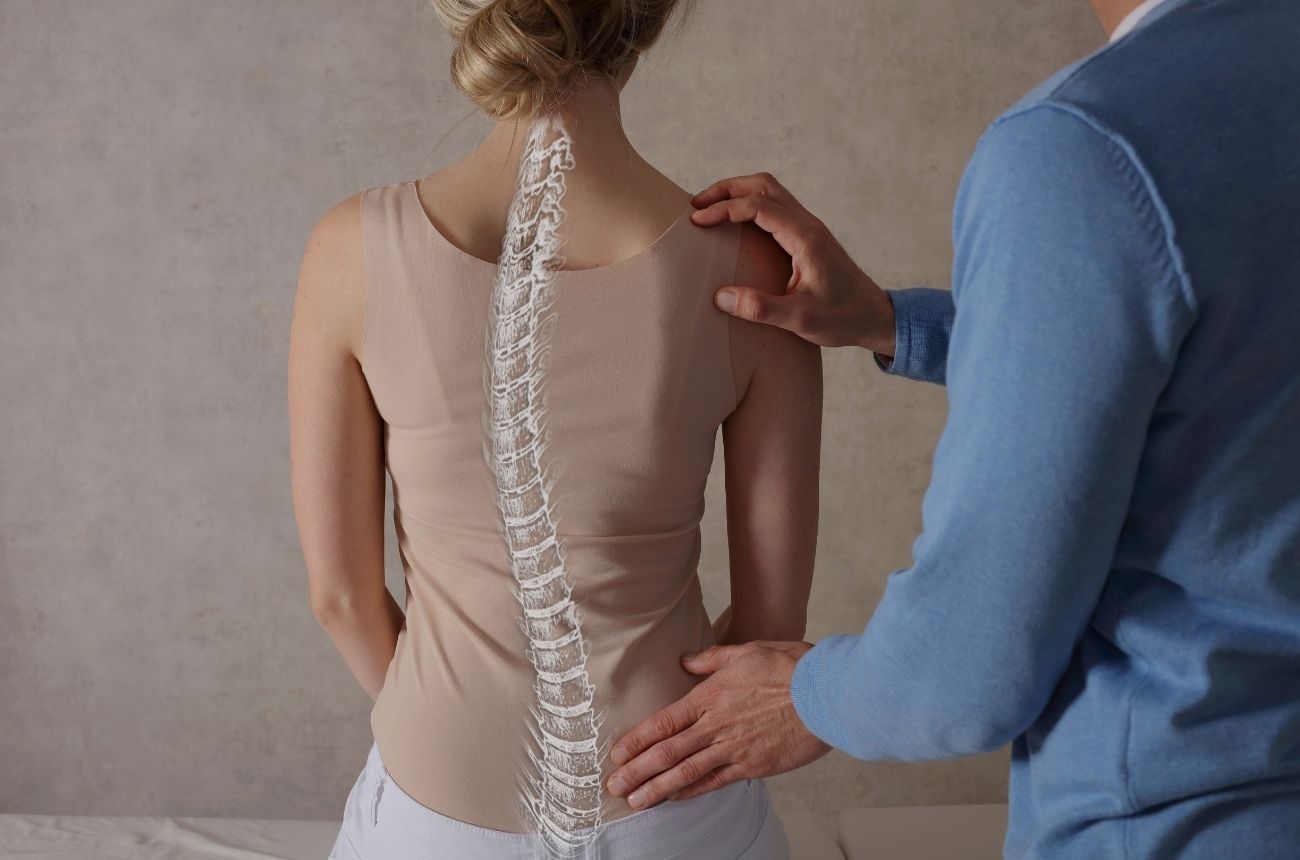
Understanding Rounded Shoulders
What Are Rounded Shoulders?
It’s more than just a bad stance. Rounded shoulders depict a forward slumping of the shoulder blades, often accompanied by a protruding neck—popularly termed “forward head posture.”
Think of it as a physical bookmark, reminding you of all those hours spent hunched over your computer or smartphone.
How to Identify Rounded Shoulders?
Next time you pass a reflective surface, pause and assess.
Does it seem like your ears align way ahead of your shoulders? Or when standing sideways, do your knuckles face the front instead of your thighs?
These could be signs.
For a thorough analysis, professionals like Troy or a chiropractor specializing in posture-related health risks can offer deeper insights.
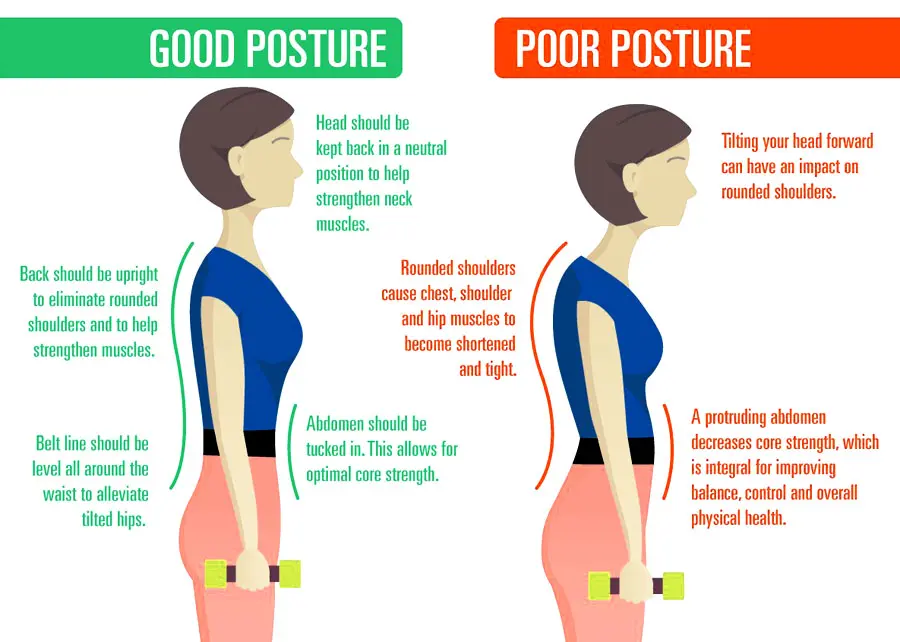
Causes of Rounded Shoulders
While it’s easy to blame it all on that 8-hour desk job, several factors intertwine:
1. Prolonged Sitting
The modern world has most of us pinned to our chairs.
The longer we sit, especially with a slack posture, the more we’re inviting those shoulders to sag.
2. Lack of Physical Activity
Remember when your gym instructor emphasized posture improvement tips?
Well, neglecting physical activity can make muscles lazy and more susceptible to hunching.
3. Weak Muscles
Particularly the ones in the upper back and chest.
When these slack off, they cease to support the spine, leading to a rounded back.

4. Incorrect Ergonomics
That ultra-comfy chair or the stylish but low desk might be trendy but can be ergonomically disastrous.
It’s not just about comfort; it’s about maintaining an ergonomic office setup that supports a healthy spine.
5. Stress and Emotional Factors
Sometimes, our emotional world casts a shadow on our physical one.
Stress and anxiety can unconsciously cause us to adopt a defensive, rounded posture.
Health Implications of Rounded Shoulders
Rounded shoulders aren’t just a fleeting fashion statement gone wrong; they have genuine health implications that can hamper daily life.
1. Neck and Shoulder Pain
That consistent throb at the base of your neck? It’s likely caused by hunched shoulders, leading to neck and shoulder tension.
The misalignment stresses muscles, causing nagging pain.
Remember that time you felt like you carried a boulder on your back? That’s it in action.
2. Reduced Lung Capacity
If you find yourself huffing after a short flight of stairs, don’t blame the cheesecake just yet.
Rounded shoulders can compress the chest cavity, limiting lung expansion.
This can diminish lung capacity, making activities that once felt like a breeze feel more like a marathon.
3. Digestive Issues
Ever thought about how rounded shoulders might play with your digestive health?
An excessively curved spine can compress internal organs, including the stomach, making digestion a tad slower and occasionally problematic.

4. Decreased Self-Confidence
Posture communicates a lot, even if we don’t realize it.
A hunched back subtly signals low confidence and reluctance, even if you’re the life of the party inside.
Plus, let’s admit it: feeling strong and upright boosts self-worth, tying directly to posture-related health risks.
Preventing Rounded Shoulders
Eradicating those hunched shoulders doesn’t require a miracle.
A blend of mindfulness, ergonomic tweaks, and a tad bit of sweat can do wonders:
1. Ergonomic Workspace
An ergonomic office setup isn’t just about sleek chairs; it’s about functionality.
Chairs that offer lumbar support, adjustable heights, and keyboards that sit naturally under your fingers can mitigate the impact of a desk job on your posture.
2. Regular Stretching
Here’s a fun fact: Regular stretching, especially those rounded shoulders exercises, can be as beneficial as a caffeine boost.
Consider them the mini breaks your body craves, shaking off the rigidity and keeping the spine agile.
3. Strength Training
Strong muscles equate to a robust frame.
Integrate muscle strengthening for posture into your routine. It’s not about looking like Hercules; it’s about feeling like him.
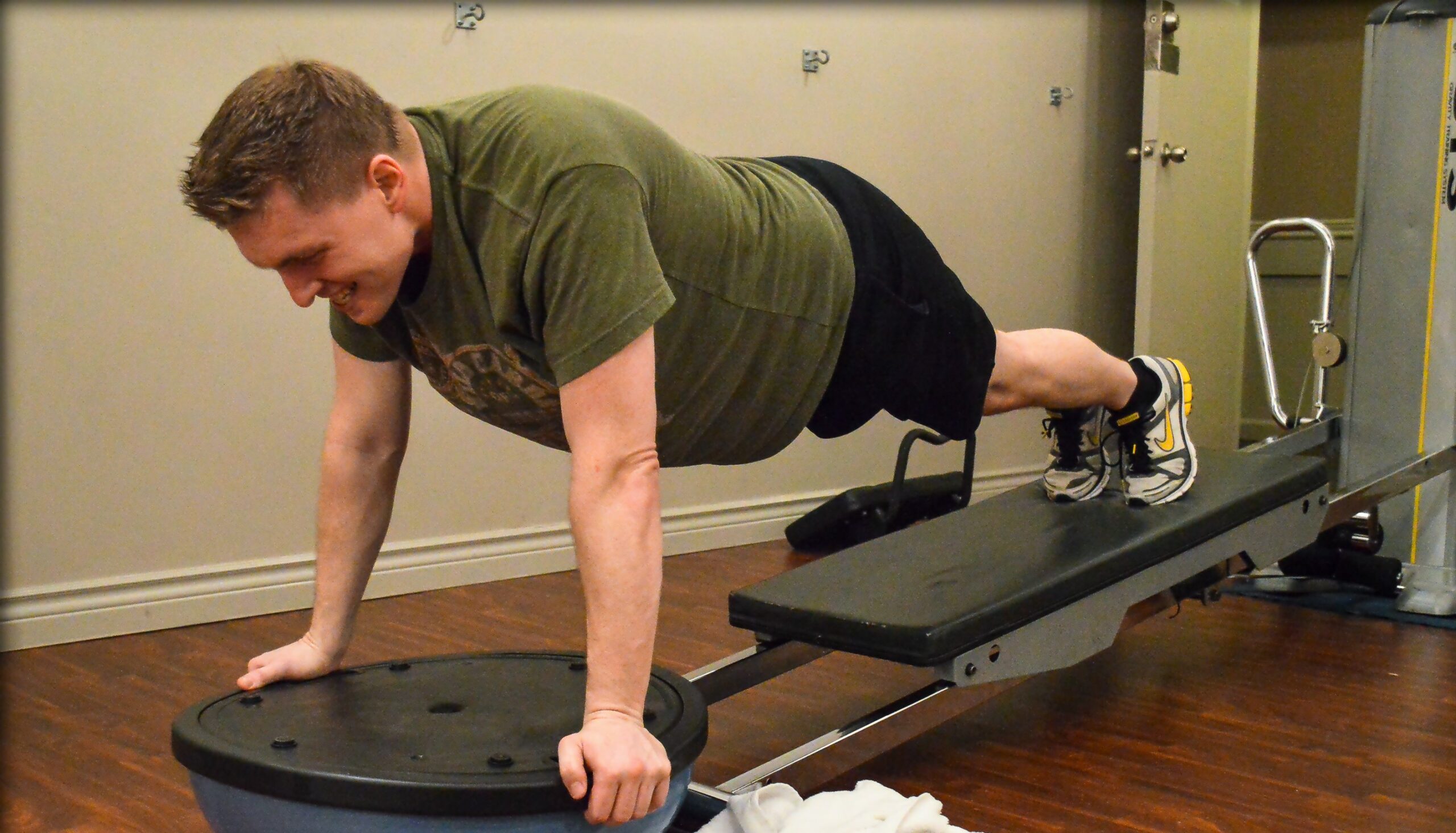
4. Stress Management
Stress can make us curl inward, both emotionally and physically.
Finding outlets to manage stress, be it meditation or a hobby, can reflect in a more relaxed posture.
Exercises to Correct Rounded Shoulders
No magic pill can straighten that back, but a few exercises, guided correctly, can do wonders:
1. Chest Opener Stretch
Stand tall. Clasp hands behind. Now, gently lift your arms while opening the chest.
Feel that stretch? That’s the feeling of your shoulders pushing back to where they belong.
2. Shoulder Blade Squeeze
Try to hold a pencil between your shoulder blades. That’s the motion.
This exercise strengthens the upper back, warding off the pull of gravity that causes hunching.
3. Wall Angels
Remember snow angels from childhood? Wall angels are their grown-up version.
Standing against a wall, move your arms up and down, mimicking an angel’s wings.
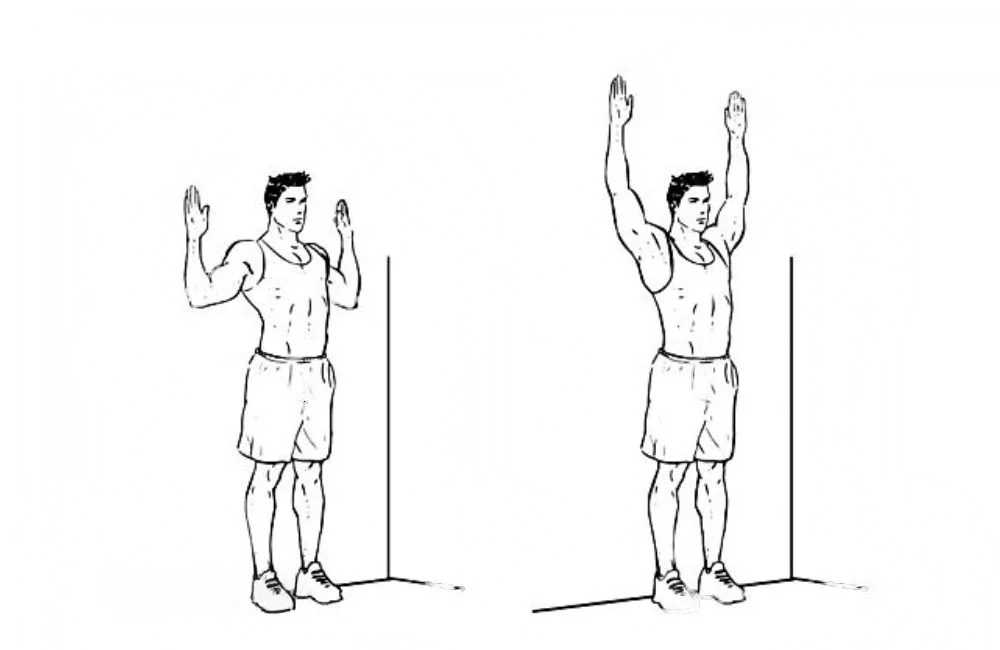
4. Resistance Band Pull-Aparts
With a resistance band held in both hands, stretch it out in front of you. Then, pull it apart by extending your arms to the sides.
This exercise is gold for strengthening the muscles that pull your shoulders back.
5. Plank Variations
More than just a core workout.
A proper plank engages the shoulders, chest, and upper back, fostering strength that counters the pull of those mischievous rounded shoulders.
Maintaining Good Posture
Navigating Vancouver’s bustling urban sprawl requires more than just a good pair of shoes—it demands good posture.
And maintaining that statuesque alignment isn’t just about looking good, but feeling good too.
1. Mindful Awareness
Ever caught your reflection in a store window and noticed a slouch?
Incorporating mindfulness for better posture can be a game-changer. It’s not about chastising yourself but gently reminding your body to align.
Every time you find yourself slumping, straighten up and take a deep breath. Embrace the posture-related health benefits.
2. Posture Braces
If you’re initially struggling with maintaining that erect stature, don’t fret. Consider the posture brace benefits.
While not a long-term solution, they offer an excellent nudge to get your muscles accustomed to holding the correct position.
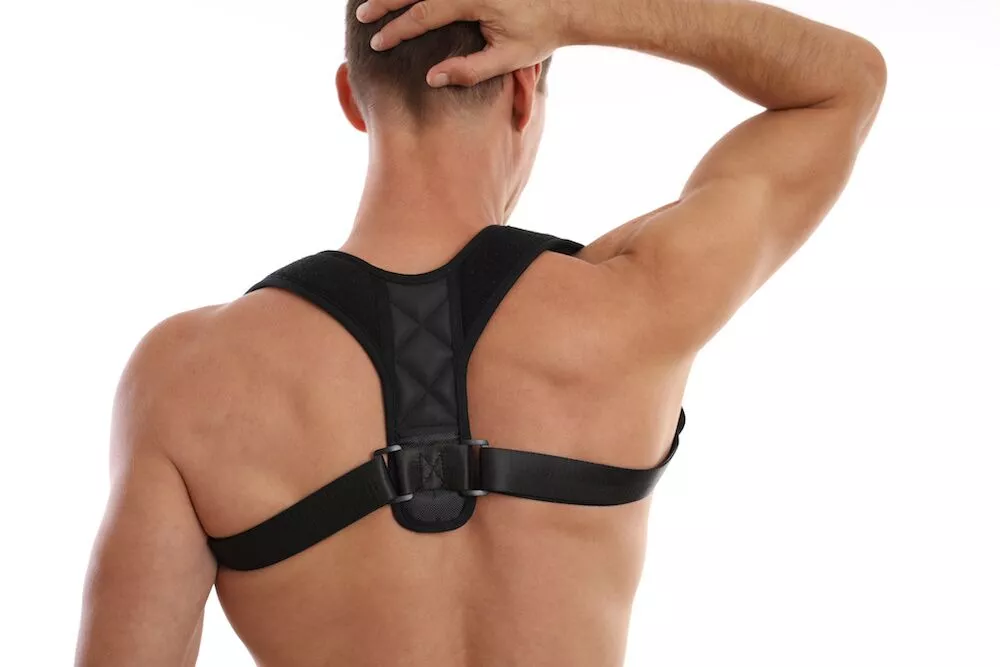
3. Chiropractic Care
It’s not just about the cracking sounds. Chiropractic posture correction can offer real relief, especially if misalignment is causing discomfort.
Regular sessions can reinforce good posture habits and provide upper back pain relief.
Ergonomic Considerations
Ever spent a day in the office and left feeling like you’ve morphed into Quasimodo? Well, office ergonomics guide us towards a more comfortable, healthier workspace.
1. Proper Chair and Desk Height
Don’t underestimate the chair.
Ensure your feet touch the ground comfortably, and your arms rest with elbows forming a near 90-degree angle.
The office is where many of us clock in hours, so why compromise with sub-par furniture?
2. Monitor and Screen Position
Straining to see a low or high screen is a one-way ticket to rounded shoulders and forward head posture.
Adjust your monitor so it sits at eye level, ensuring you’re not craning your neck up or down.
If you’re a multi-screen user, the game changes slightly, but ergonomics remains key.
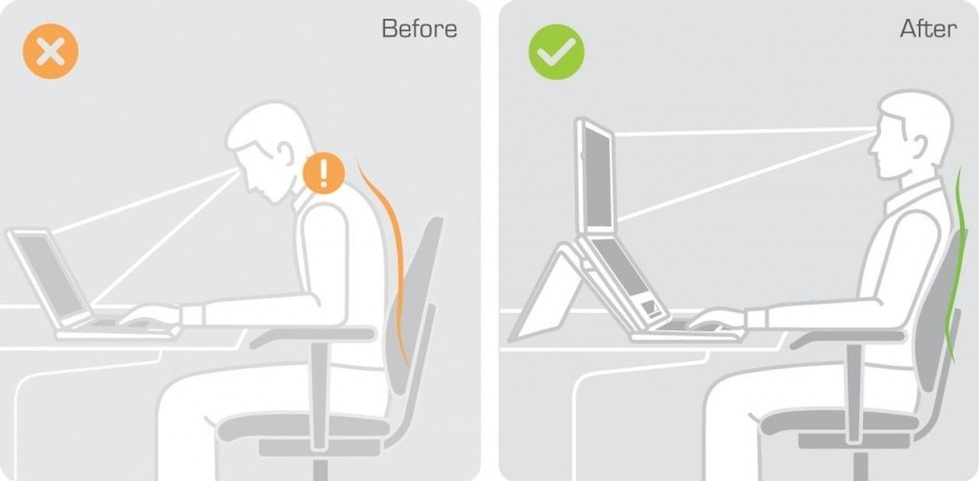
3. Keyboard and Mouse
These desk staples shouldn’t be an afterthought.
Your keyboard should sit such that your wrists remain straight as you type.
As for the mouse, keep it within easy reach to prevent unnecessary stretching.
Lifestyle Changes
In the quest to correct rounded shoulders, sometimes, it’s the little things that count the most.
1. Take Breaks
Especially for the Vancouver professionals glued to their screens.
Set a timer, stand, and stretch every hour.
A simple walk to refill your water or a quick gaze out the window can do wonders.
2. Stay Active
Not just at the gym.
Consider taking the stairs, going for evening walks, or even just choosing a parking spot a little farther away.
These small acts not only keep your body active but are preventive measures against poor posture effects.
3. Stay Hydrated
It sounds unrelated, but hydration directly affects muscle function.
Drinking water can prevent muscle cramps, keeping you comfortable and more likely to maintain a good posture.
And while you’re at it, consider lung capacity improvement exercises. A deep breath can reset posture like magic.
Mindfulness and Stress Reduction
In our bustling Vancouver life, stress isn’t just an emotional burden; it’s a physical one, manifesting in poor posture effects like those dreaded rounded shoulders.
But by tapping into mindfulness, we can not only destress our minds but realign our spines.
1. Deep Breathing
Ever found yourself taking shallow breaths when stressed? This not only limits lung capacity but also perpetuates forward head posture.
Deep, diaphragmatic breathing encourages you to sit or stand straight, opening up the chest.
This technique not only provides immediate stress relief but doubles as a lung capacity improvement exercise.
2. Meditation
Think of meditation as a workout for your mind.
Just as targeted exercises can correct rounded back issues, consistent meditation can shed stress-related posture issues.
When we meditate, we become acutely aware of our body.
This awareness makes us naturally adjust our hunched shoulders, aligning our spine in its natural curve.
Plus, practicing meditation can bolster self-confidence and body posture, ensuring that you not only feel good inside but look great outside.

3. The Power of Now
A lot of our posture problems stem from either ruminating about the past or fretting about the future.
Being present, or practicing ‘The Power of Now,’ allows us to check in with our bodies.
It’s a gentle reminder to pull back those shoulders, level the chin, and take a deep, nourishing breath.
Wrap Up
The journey from rounded shoulders to radiant posture is less about physical tweaks and more about holistic well-being.
From the ergonomics of our desk job posture to the depths of our breathing, every element is intertwined.
And while posture-related health risks are real, the solutions are within reach.
With a blend of ergonomic awareness, targeted exercises, and the magic touch of mindfulness, we have the power to redefine our stance, both physically and mentally.
But remember, while self-help is fantastic, guidance amplifies results.
And in Vancouver, few offer expertise as Troy does at Tsquared.
With two decades under his belt, he’s seen the transformations – from hunched to heroic, from bent to buoyant.
Ready to straighten up and shine? Let’s not just stand but stand out.
Dive deep, and let Troy’s unparalleled expertise guide you to not just a better posture but a better you.
